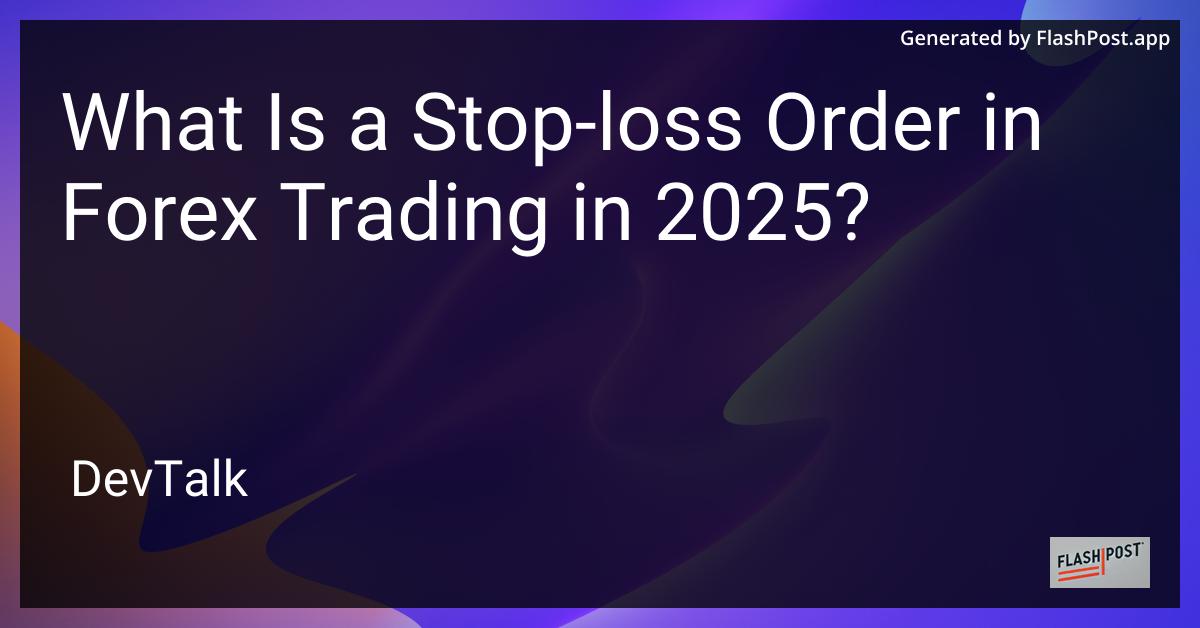What Is a Stop-loss Order in Forex Trading in 2025?

What is a Stop-Loss Order in Forex Trading in 2025?
In the rapidly evolving world of forex trading, understanding and implementing effective risk management strategies is crucial for success.
One of the fundamental tools traders use to protect their investment is the stop-loss order. As we look towards 2025, the role of stop-loss orders remains pivotal in navigating the dynamic forex market landscape.
Understanding Stop-Loss Orders
A stop-loss order is a protective mechanism traders utilize to limit potential losses on an active trade. Essentially, it instructs the trading platform to close a position once the market price reaches a specified level, thereby preventing further losses due to adverse price movements. This predefined level is often set below the current market price for a long (buy) position and above for a short (sell) position.
The Importance of Stop-Loss Orders in Forex Trading
-
Risk Management: In the volatile forex market, prices can shift rapidly and unexpectedly. Stop-loss orders act as a safety net, ensuring that losses are contained within predetermined limits. This is particularly important for retail traders who cannot afford significant losses.
-
Emotional Discipline: Trading decisions driven by emotion can lead to costly mistakes. A stop-loss order helps to automate part of the decision-making process, reducing the emotional burden of deciding when to cut losses and allowing traders to stick to their planned strategies.
-
Market Uncertainty: In 2025, geopolitical tensions, economic instability, and technological advancements will likely continue to impact forex trading. Stop-loss orders offer a level of security amid such uncertainties, making them an indispensable tool for modern traders.
How to Set Effective Stop-Loss Orders
-
Analyze Volatility: Understand the volatility of the currency pair you are trading. Highly volatile pairs might require a wider stop-loss to accommodate price swings without prematurely closing a position.
-
Technical Indicators: Use technical analysis indicators such as moving averages, ATR (Average True Range), or support and resistance levels to determine optimal stop-loss points.
-
Position Sizing: Adjust your position size relative to the stop-loss distance to maintain proper risk management, typically risking a small percentage of your trading capital on any single trade.
The Future of Stop-Loss Orders
As trading technologies continue to evolve, we can expect stop-loss orders to become even more sophisticated by 2025. Automation, enhanced precision, and integration with AI-driven market analysis tools will likely play a more significant role in how traders implement and manage stop-loss strategies.
Further Learning and Strategies
For those interested in deepening their understanding of forex trading and risk management strategies, explore these valuable resources:
-
Best Forex Books Promotions: Discover top deals on essential reads that cover a wide range of trading topics, from fundamentals to advanced strategies.
-
Implementing a Forex Strategy: Join discussions and gain insights on executing effective forex strategies, including carry trades and more.
Conclusion
In conclusion, stop-loss orders continue to be a cornerstone of effective forex trading as we approach 2025. They offer critical protection for traders, allowing them to manage risk, maintain emotional discipline, and adapt to ever-changing market conditions. By leveraging these tools and staying informed through valuable resources, traders can enhance their decision-making process and improve their chances of success in the forex market.
By incorporating strategic stop-loss orders in your trading plan, you prepare yourself to face the uncertainties of the forex market with confidence and precision.